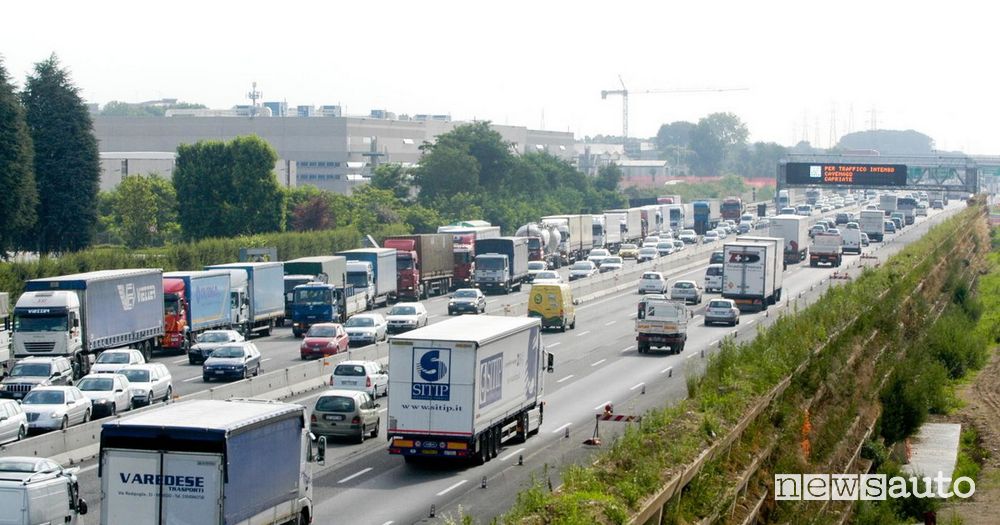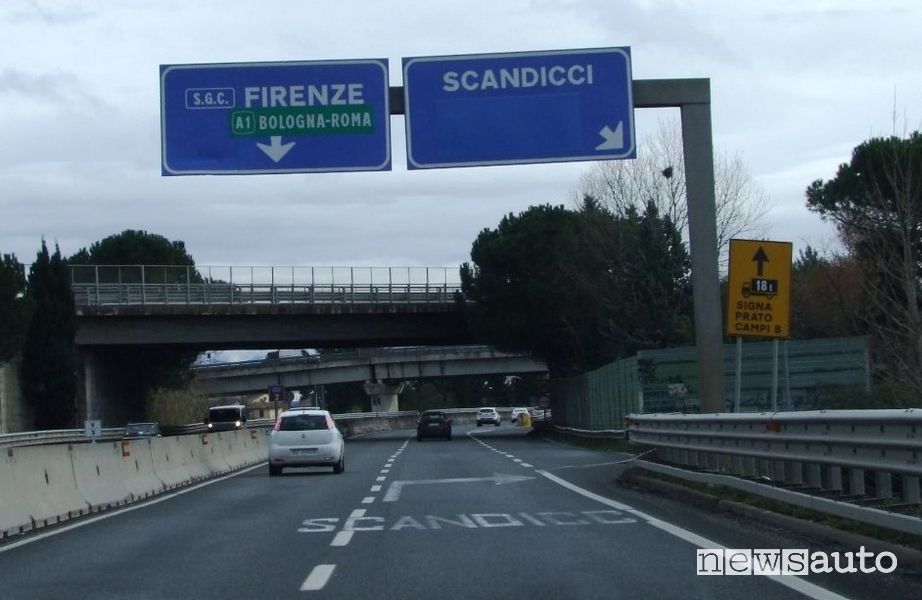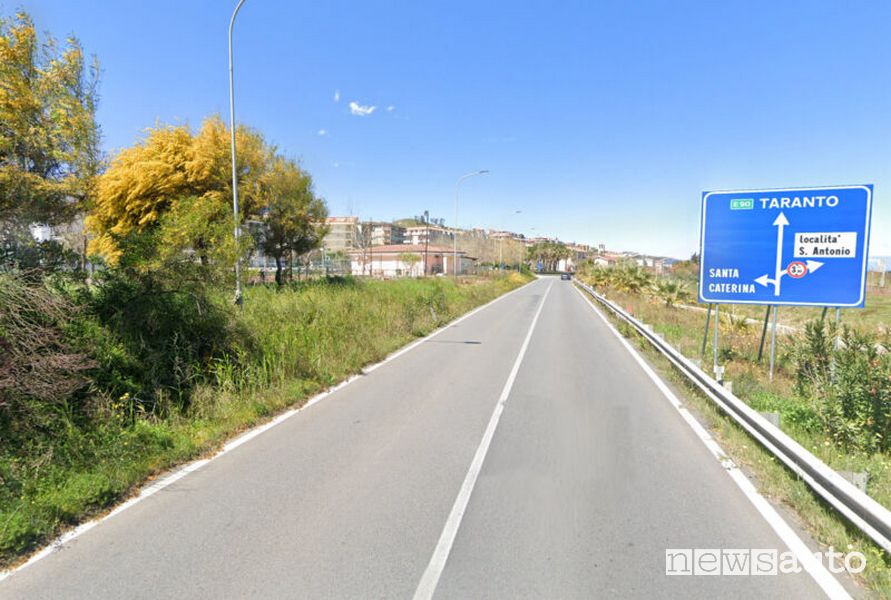Speed limits are important for road safety and are included in traffic legislation around the world. These limits are established for various reasons, including the safety of drivers, passengers and other road users, as well as to reduce the environmental impact of vehicles.
They may vary depending on the type of road and the area. For example, highways usually have higher speed limits than city streets. In some nations, such as Germany, parts of highways have no speed limits, while in other countries, such as the United States and the United Kingdom, speed limits are strictly regulated and enforced.
When we travel on street And highway in Italy we have to deal with the speed limitsgoverned byarticle 142 of the Highway Code. The rule in fact indicates the full speed which you can reach by car on a road municipal, state, provincial and highway.
Speed limits on roads
Maximum speed limits in Italy vary depending on the type of road and weather conditions:
- Highways the speed limit is 130 km/h.
- On main extra-urban roads the speed limit is 110 km/h.
- On secondary extra-urban and local extra-urban roads the speed limit is 90 km/h.
- Urban roads, the speed limit is 50 km/h, in some cities it has been increased to 30 km/h.
- In case of rain, snow or ice the speed limit may be reduced.
These are general limits, however there may be specific speed limits for particular situations or areas, and in some areas there may be signs indicating the speed limit.
Speed limits on motorways in Italy
In highwaythe car can travel at a maximum of 130 km/h, 110 km/h on main extra-urban roads (respectively, 110 km/h and 90 km/h in case of atmospheric precipitation).
Motorway speed limits for vehicles with trailers or caravans are instead of 80 km/h. For the new drivers the limit on the motorway is 110 km/h for the first three years after obtaining the driving licence.
On some motorway stretches cars can even reach 150 km/has established by thearticle 142 of the New Highway Code. You can reach 150 km only in the sections at least three lanes in the direction of travel, where there is an emergency lane, adequate signs and a low number of road accidents on that particular stretch of road.

Only motor vehicles are allowed on the motorway. Motor vehicles with displacement less than 150 cm³vehicles without tires, as well as sidecars and all motor vehicles that do not exceed 80 km/hsuch as agricultural machinery and operating machinery.
Speed limit on highways and ring roads
The freeways and the ring roads in the Highway Code they are identified as main extra-urban roads and have a speed limit of 110 km/h for main and extra-urban roads 90 km/h in case of bad weather.
For buses with a full load mass between 3.5 and 8 tonnes and for trucks with a full load mass between 3.5 and 12 tonnes it is 80 km/hwhile for trucks with a full load mass exceeding 12 tonnes and for trailer towing vehicles it is 70 km/h.

Freeways by definition are roads independent carriageways or separated by impassable traffic islands, each with at least two lanes of travel and paved shoulder on the right, without at-grade intersections, with coordinated access to lateral properties, marked by the appropriate start and end signs.
State road speed limit, extra-urban provincial roads
The maximum limit on state and provincial roads, and more generally in secondary extra-urban sectionsin Italy it is 90 km/h. This category includes all single carriageway extra-urban roadsregardless of other characteristics such as the presence of at-grade intersections, level crossings or private accesses.
On secondary extra-urban roads the maximum speed limit for cars, motorcycles and trucks they motorhomes of mass at full load not exceeding 3.5 t and of 90 km/h and never higher, in the absence of specific signs that set the limit at a lower value, on a specific stretch of road.

Speed limits by vehicle categories (trucks, agricultural machinery)
For other categories of motor vehiclesthe limit can be inferior and it depends on the type of vehicle, and to be precise:
- 80 km/h: vehicles for the transport of goods with a full load mass exceeding 3.5 tonnes and not exceeding 12 tonnes, vehicles for the transport of people with more than eight people excluding the driver, heavy quadricycles, buses and trolleybuses with a higher full load mass to 8 tons;
- 70 km/h: vehicles for the transport of goods with a full load mass exceeding 12 tonnes, articulated and articulated vehicles, motor vehicles (including cars) towing trailers (even light ones) or caravans;
- 60 km/h: work vehicles (for example work trucks);
- 50 km/h: motor vehicles transporting explosive materials;
- 45 km/h: light mopeds and quadricycles;
- 40 km/h: wheeled agricultural machinery;
- 15 km/h: tracked agricultural machinery (must be authorised)
Speed limits in the city
In the city the speed limit is 50km/h, which can be raised to 70 km/h when the construction and functional characteristics allow it as in some urban traffic roads.

THE mopeds they can travel at a maximum of 45 km/h – 30 km/h in residential areas and 50 km/h outside for cars and motorbikes transport class 1 dangerous goods.
In some cities the speed limit has been lowered to 30 km/h.
Speed limits by vehicle type
The speed limits, in addition to the type of road, are also established by the vehicle categories:
- mopeds: 45 km/h;
- motor vehicles or motor vehicles used for the transport of dangerous goods falling within class 1 listed in the annex to the agreement referred to in article 168, paragraph 1, when traveling loaded: 50 km/h outside inhabited centres; 30 km/h in residential areas;
- agricultural machines and operating machines: 40 km/h if mounted on tires or other equivalent systems; 15 km/h in all other cases;
- quadricycles: 80 km/h outside built-up areas;
- trains consisting of a motor vehicle and a trailer referred to in letters h), i) and l) of the art. 54, paragraph 1: 70 km/h outside inhabited centres; 80 km/h on motorways;
- buses and trolleybuses with a total weight at full load exceeding 8 t: 80 km/h outside residential areas; 100 km/h on motorways;
- motor vehicles intended for the transport of goods or for other uses, with a total mass when fully loaded exceeding 3.5 t and up to 12 t: 80 km/h outside inhabited centres; 100 km/h on motorways;
- motor vehicles intended for the transport of goods or for other uses, with a total mass when fully loaded exceeding 12 t: 70 km/h outside inhabited centres; 80 km/h on motorways;
- trucks with a total weight at full load exceeding 5 t if used for the transport of people pursuant to art. 82, paragraph 6: 70 km/h outside inhabited centres; 80 km/h on motorways;
- construction vehicles when traveling fully loaded: 40 km/h in residential areas; 60 km/h outside residential areas.
- Electric scooters must never exceed 20 km/h and 6 km/h in pedestrian areas.
PROS and CONS about speed limits
Speed limits are often a subject of debate. Some argue that they should be increased on certain roads (on the motorway at least 150 km/h in some safer sections), saying that modern cars are safer and can handle higher speeds. Others, however, insist on the need to maintain or even reduce the current limits to ensure greater road safety.
→ STREET CODE NOTICE Stay updated on all the news regarding the Highway Code.
→ What do you think? Drop by discussions on the FORUM!
#Speed #limits #kmh

